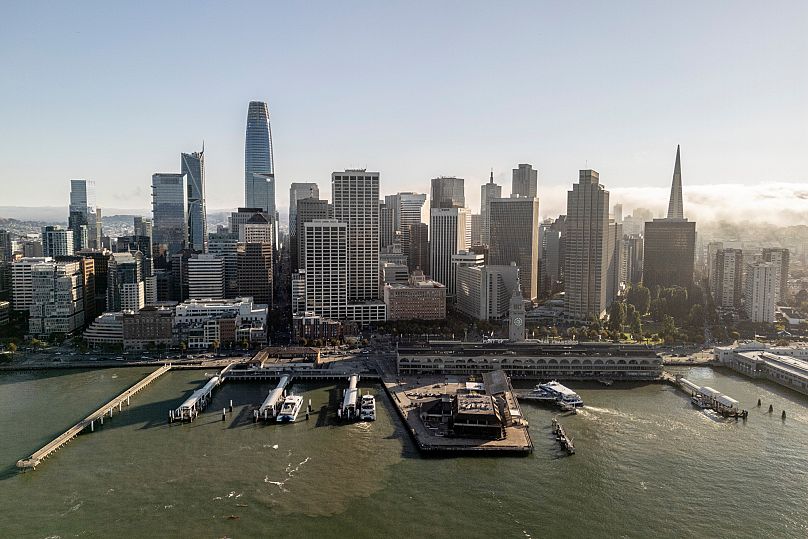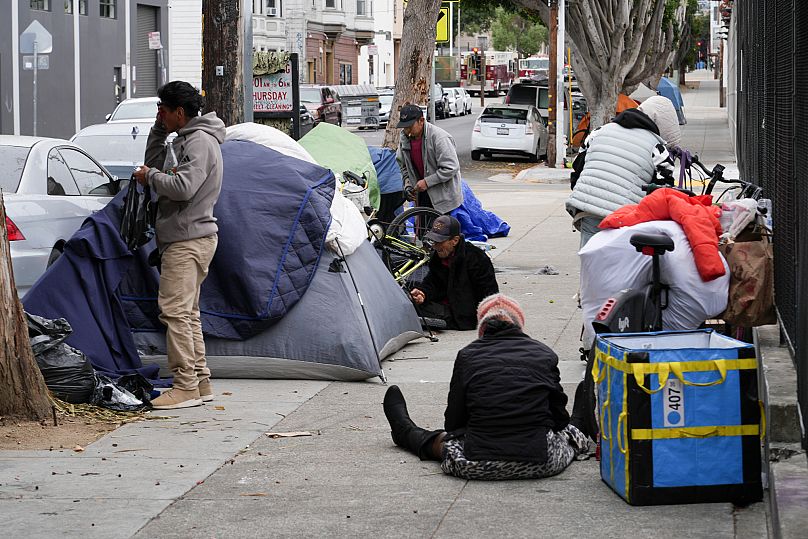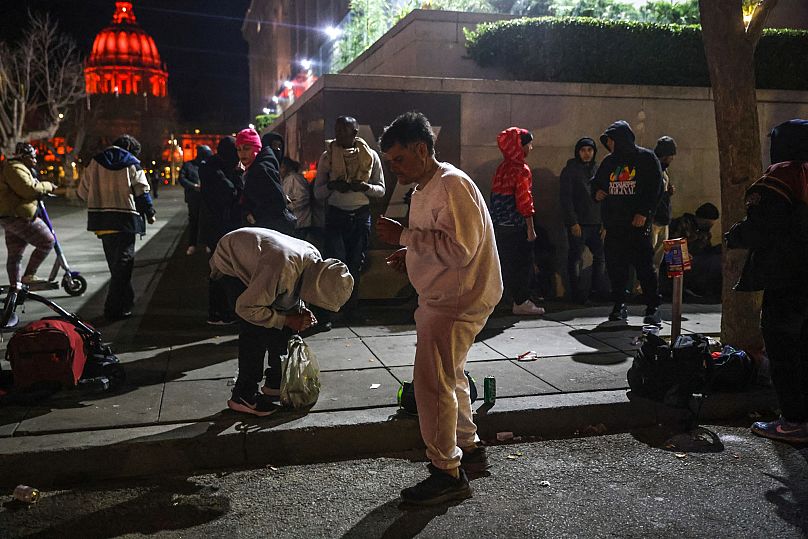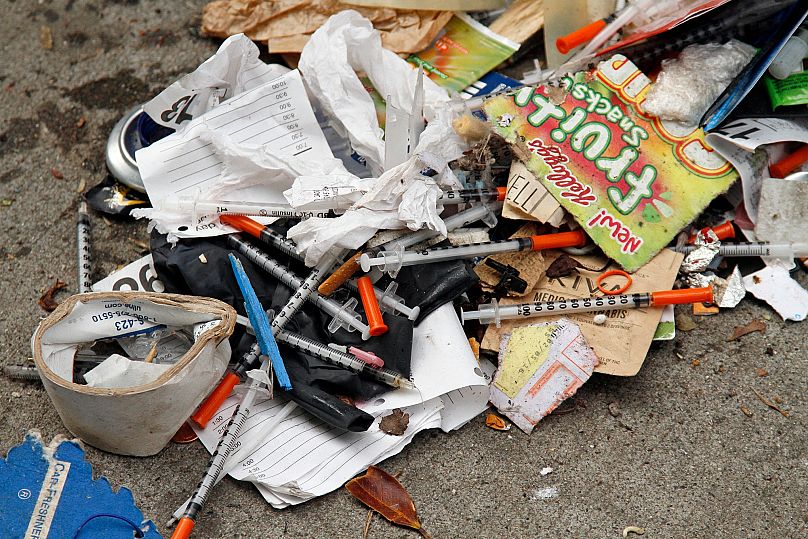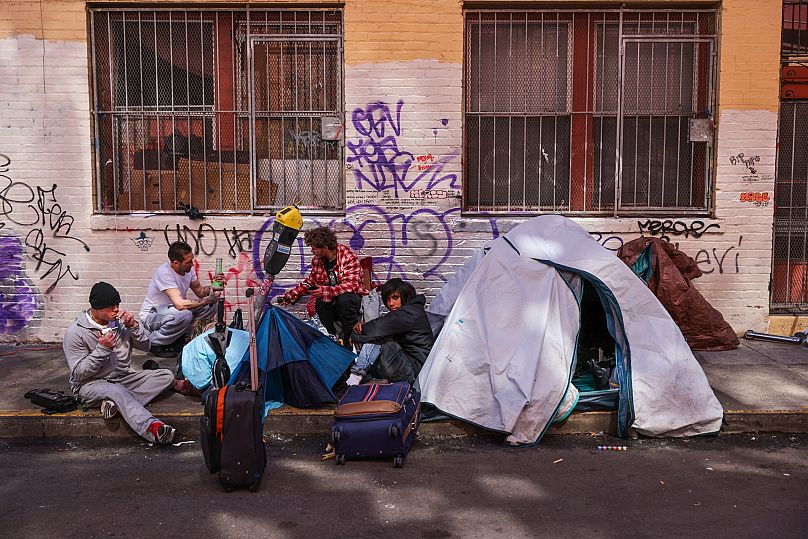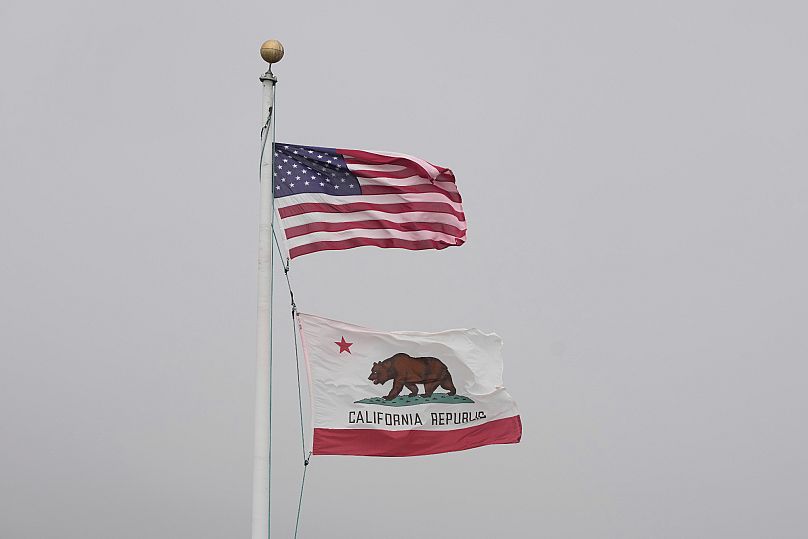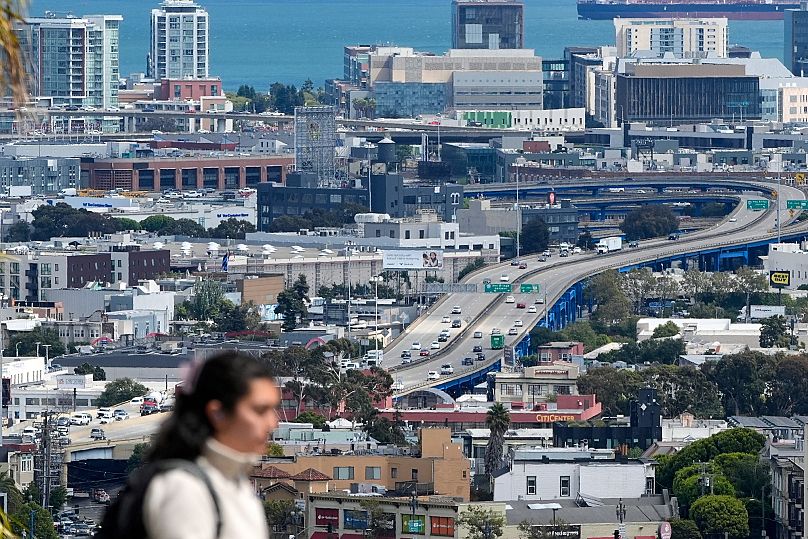San Francisco's tech boom coexists with a severe drug epidemic and homelessness, leading to high overdose rates and criticism from prominent figures like Elon Musk and Donald Trump.
 ADVERTISEMENT
ADVERTISEMENT
San Francisco has at once become home to some of the wealthiest people in the US rubbing shoulders with the president and a burgeoning population in poverty — and a narcotics epidemic that has made it a flashpoint in America's debate on drugs.
In parts of the city, a fleet of high-tech driverless high-end taxis roam the streets, a nod to the city’s tech industry and proximity to Silicon Valley.
Yet just blocks away, the skyscrapers, designer brands and exclusive bars give way to homeless shelters and rehabilitation centres of the Tenderloin.
Tents and tarpaulins line the streets, which often lack even basic amenities of grocery shops and pharmacies, let alone cafes or parks. Drug use in the open remains commonplace, namely of the highly addictive narcotic fentanyl.
Narcotics use has spiralled, with overdoses reaching nearly three times the US national average, according to the Centers for Disease Control and Prevention. After a record 806 deaths in 2023, overdoses declined by 21% in 2024 to 635 deaths, though rates began creeping back up again.
This has become a public bugbear in recent years for many of the super-wealthy, including tech billionaire Elon Musk, who until recently owned a mansion in the Bay Area.
US President Donald Trump’s former top ally called the city “a disaster,” posting on his platform X in May 2023, “once beautiful and thriving, now a derelict zombie apocalypse."
Musk also moved X's headquarters from San Francisco to Austin in 2024 despite promises that he would stay in the city, stating that he did so because he "had enough of dodging gangs of violent drug addicts just to get in and out of the building.”
Trump himself said he would send in the National Guard in August to “clean up” San Francisco, blaming local Democratic politicians for “destroying” it.
Those Euronews spoke to who work directly in combating the current epidemic also laid some of the blame on local officials. Still, they claimed it was only a part of a wider mosaic of problems.
Crime and poverty
Cedrick Akhbar, the executive director and co-founder of Positive Directions Equals Change, a nonprofit organisation aiming to alleviate poverty and addiction in underserved communities, including many ex-prisoners, spoke to Euronews as he walked through Tenderloin.
Akhbar was himself a self-described “heroin addict” who spent various periods of time in prison. Although he said things have always been challenging in the city, he pointed to a rise in inequality driving prices up, also contending that the influx of wealthy residents has led to the issue being overlooked.
While some benefactors “throw money” at projects to ensure safe drug usage, Akhbar said, these projects tend to “keep people poor, on drugs and alcohol,” rather than tackle broader issues.
Part of this is the cost of living, said Bilal Mahmoud, a former analyst in the Obama administration and city supervisor for some of San Francisco's poorest districts, namely the Tenderloin, where Mahmoud lives.
“Housing is too unaffordable,” Mahmoud told Euronews, pointing out that average rents outstrip the income of many residents.
Citywide rents now average over $3,000 (€2,560) per month — requiring an annual income of at least $120,000 (€103,100) to afford by standard guidelines.
Even in the Tenderloin, San Francisco's cheapest neighbourhood, a one-bedroom flat averages $2,500 (€2,150) monthly, while the district's median household income hovers around $40,000 (€34,800).
It is also a vicious cycle of the environment, he argued, where everyday amenities no longer exist and infrastructure has become related mainly to the drug crisis, leading many to come from other neighbourhoods that do not have those services, and preventing others from getting out.
He mentioned a recovering addict he spoke to who had overdosed multiple times, even in recovery. “In his words, he died three times … basically because when he's surrounded by an open-air drug market, it's environmentally triggering," Mahmoud recalled.
"If you're in recovery, it's very hard to be surrounded by the thing that you're trying to get free from.”
This was an especially pertinent problem as the district was also home to the highest concentration of children in the city, some 3,500, according to the supervisor.
'Is that what an addict looks like?'
Just a few kilometres away from Cedrick and the Tenderloin, smack-dab in one of San Francisco’s richest districts overlooking the renovated port filled with glitzy bars and megayachts, sits Foundations.
Inside, the private addiction clinic is clean and friendly, and adorned with comfortable, plush furniture and fridges stocked with lightly flavoured non-alcoholic selzers.
“People think that an addict is someone who's dirty, homeless, has no money,” explained Adam Knepper, the non-residential rehab centre's director.
“We get a lot of clients who use meth and hire escorts. Why? I mean, low self-esteem, no self-worth value, but they'll spend like $1,000, $2,000, $10,000 on that," he told Euronews.
"And it's like every week. Now, is that what an addict looks like?” Knepper asked, shrugging.
Many of Foundations’ clients work for the very companies that have complained about or even threatened to leave the city over the drug problems. Knepper offered several reasons for the issue, but chief among them for his clients seems to be the pressure of these industries.
The tech megacompanies' expectations of their staff have ballooned in recent years, with many employers expecting their workers to put in as many hours as possible each week and forgo any kind of work-life balance.
Taking a break from his work late in the Californian evening, Spencer Shulem told Euronews that this is now the industry standard. “I probably work 80 hours a week, at least in front of my computer, every week. I probably take off a week throughout the year,” he said.
Spencer runs an AI startup in the Bay Area called BuildBetter, having founded his first tech company at the age of 14.
When the issue of exhaustion due to long hours — and the purported link to addiction — was brought up, he pushed back. “I think burnout often presents itself more like in a car whose wheels are spinning but you're not moving forward," he contended.
“I could be working 80 hours a week, but if I'm feeling momentum, I feel like customers are loving what we're doing, I feel like I could go for 100,” he says jovially.
Shulem says he has “never been drunk,” but has talked publicly about himself and others in the San Francisco tech world taking drugs, telling the Wall Street Journal that he took LSD “about every three months” to help his work and creativity.
However, he contrasted it to the wider recreational drug crisis, viewing narcotics as a “tool” for work, which could be used to increase output.
“Our job is to put in the most amount of possible work we can cognitively on a specific problem for as long as we possibly can. In any other industry based on performance, there's usually regulation," Shulem explained.
“Athletes can't do certain drugs, because that would be unfair to everyone else. We don’t have that.” He was not necessarily unhappy about it either, he said.
Yet, for Knepper, this attitude was precisely what brought people to Foundations’ doors. “We're not robots. And people break down.”
Just across the corridor in a room filled with low lighting and flameless candles, a client who had worked in tech for years reflected on how the sector had treated him and many at the centre.
“It proves that the CEOs didn't really care (about employees) in the first place. They just care about their shareholders and their own value, you know. Employees become commoditised," he told Euronews.
California sober
However, US psychologist and deputy editor of the journal Addiction Professor Keith Humphreys cast doubt on the idea that the prominence of the tech industry in San Francisco contributes to its drug problem.
“I don't think working in the tech industry is more stressful than driving a bus, mining coal, or being a firefighter, among many other jobs,” Humphrys told Euronews.
The highly decorated psychologist, who advised former President George W Bush and California Governor Gavin Newsom on drug policies, said the “unique” issue with San Francisco is that “drug policies got too skewed towards harm reduction and the rights of drug users while ignoring the rights of everyone else and the value of prevention and treatment.”
In California, residents passed a state-wide referendum known as Proposition 47 in 2014, which downgraded many non-violent offences, including drug possession, as misdemeanours.
While San Francisco has maintained a policy of “harm reduction” — making it safer to consume drugs rather than aiming for a reduction in use through means including criminalisation — since 2000.
The city has long-running programmes offering regulated spaces for drug use, as well as providing clean foil, pipes and needles. However, these were expanded in the late 2010s and early 2020s, which coincided with the rise in fentanyl usage across the US.
Akhbar was recently elected to the city’s executive committee for the Democratic Party. He did not hold back on his party’s leadership.
“I blame it on our governor, Gavin Newsom, who was mayor here. I blame it on Nancy Pelosi," Akhbar said. "I truly believe they've been sending money here, but all the money has been going to enabling people and not really helping people.”
Even Supervisor Mahmoud admitted that “in some respects, there was not enough political will” to solve the crisis.
Attitudes seem to be changing. As state governor, Newsom directed the California National Guard to go into the city in 2023 to “address public safety concerns, especially the fentanyl crisis."
The new mayor, Daniel Laurie, who assumed office in January, has also pledged a “breaking the cycle programme" to crack down on drug use.
Mahmoud insisted that the authorities were changing. “This is the first time that we've had a board of supervisors and a mayor that could collaboratively work through this type of difficult legislation.”
Prof Humphreys called the new approach “a more sensible balance”.
While supportive of the change in attitude, Akhbar remained sceptical, labelling the city “a drug mecca”.
“Our current mayor is on social media, promoting the city and how it's been turned around. And all I still see is the same thing,” he stressed.
Reflecting on his own life, he mentioned his father’s addiction, which led him to leave the family when Akhbar was a child.
Akhbar did the same thing. In his conversation with Euronews, he insisted the cycle has to be broken somehow.
“What's more hurtful and harmful for me is watching children in the Tenderloin. Children have to watch this. What do you tell a child? How do you explain it to them?”
Euronews has reached out to the representatives of Gavin Newsom and Nancy Pelosi for comment.











